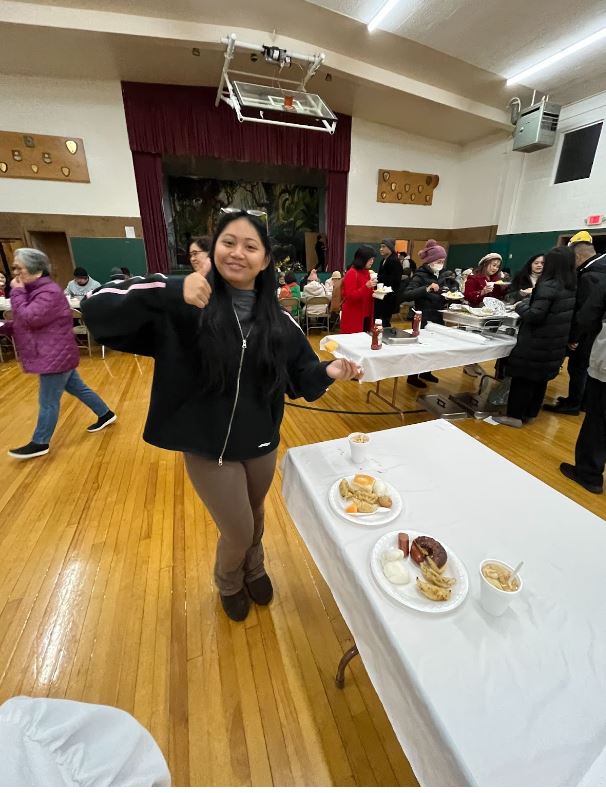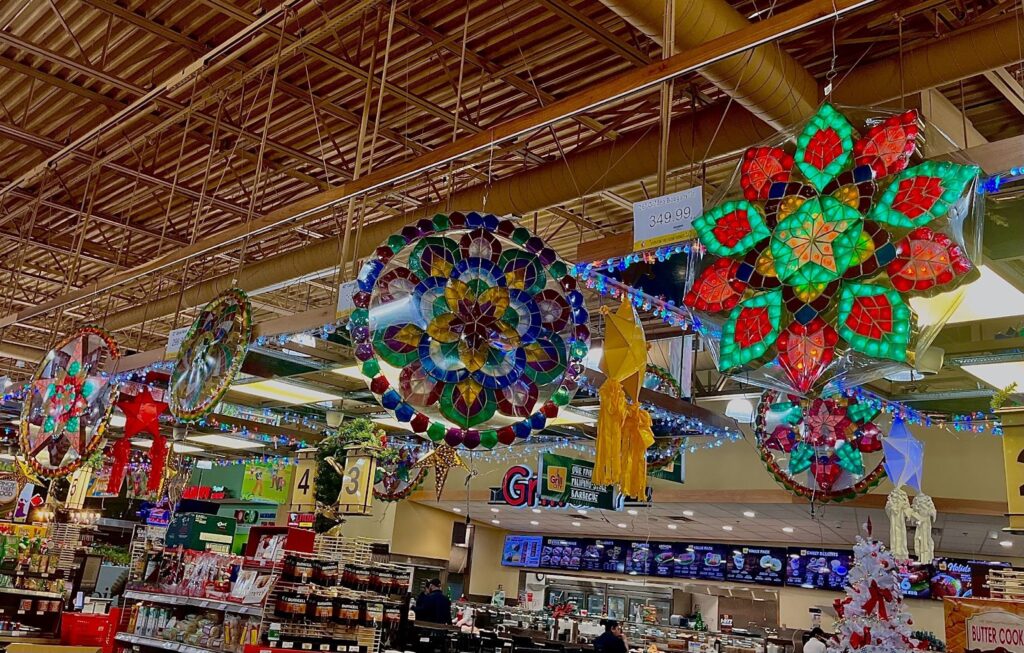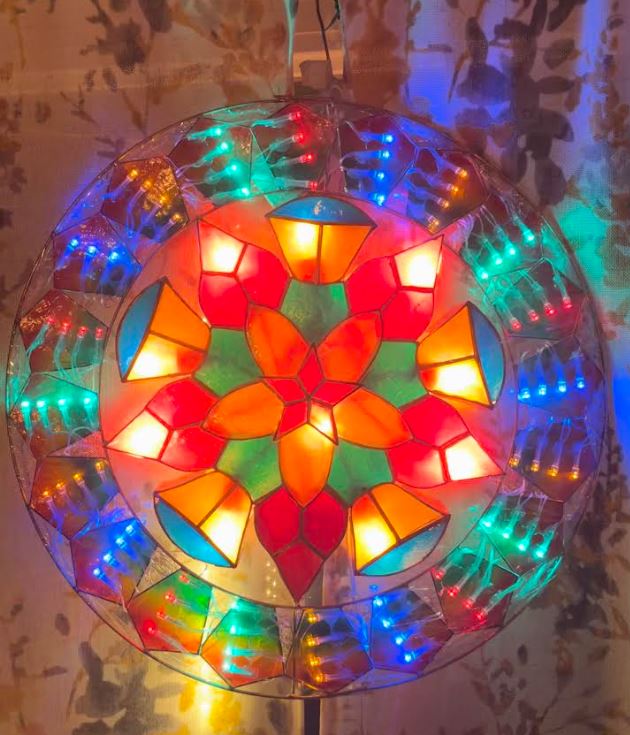By Dhanika Pineda
For nine days in December, every year since the fourth grade, Samantha Calamiong gets up at five in the morning and walks around the corner with her family to attend Simbang Gabi. Thousands of Filipinos across the U.S. and the Philippines join her in this tradition to ring in the last leg of the longest Christmas celebration in the world: Pasko.
Pasko is the Tagalog word for Christmas, but it denotes much more than the Holiday celebrated on December 25th. In the Philippines, Pasko celebrations begin as early as September, the first of four “ber” months, followed by October, November, and December. For many Filipinos, the festivities don’t end until early January, when the feast of the epiphany marks the end of the Christmas season.
Religious Celebrations
Many Pasko traditions and festivities are rooted in the Church. According to Pew Research Center, 93.1% of the Philippines’ population is Christian and about 81% is Catholic. Over 4.2 million Filipinos live in the U.S. with 65% of Filipino Americans identifying as Catholic.
In the nine days leading up to Christmas, you might find Filipino Catholics participating in the tradition of Simbang Gabi, or Mass at Night. The nine consecutive masses take place from December 16 through December 24. Mass goers typically participate in the novena with an intention in mind and believe that it will be granted upon the tradition’s completion.
“Leading up to it, [Simbang Gabi] makes me feel closer to Santo Nino, Baby Jesus. Praying to him is a big part of Filipino culture,” 19-year- old Calamiong said to AsAmNews. She has been attending Simbang Gabi since the fourth grade, when she began altar serving for the nine consecutive masses.

“I also get to see all these other Filipino people, get to know them and hear their experiences,” Calamiong said.
In the Philippines, the masses typically take place around dawn, between four and five in the morning. In the states, most Catholic Churches in areas with large Filipino communities, such as Los Angeles and the Bay Area, typically provide the service around 5:30 a.m. Omnes Magazine reports that at least twenty dioceses across the U.S. now participate in the nine day devotion.
Simbang Gabi is a community affair; just as important as the masses themselves are the breakfasts that follow. Participants typically contribute hot foods — pandesal (Filipino bread rolls), arroz caldo (savory rice porridge), champorado (chocolate rice porridge) — and drinks such as coffee and juice to share after the mass. Many parishes with large Filipino communities, such as Calamiong’s parish, St. Bede, have volunteer groups to coordinate these community bonding meals.
“It’s definitely a big part of my culture,” Calamiong said, “It’s about getting closer to God before he comes into the world on Christmas, but every single morning we eat breakfast after and I also get to spend time with family and friends.”
In the home, it is also tradition to display a Belen, a scene representing the Nativity or birth of Jesus Christ. Though these traditions have become integral parts to a Filipino Pasko, it’s important to note that these religious celebrations — along with Catholicism and Christianity itself — were introduced by Spanish missionaries during the colonial period in the 16th century.
A Good Night (With Good Food)
Noche Buena, literally “good night,” is a familial feast celebrated on Christmas Eve. Late into the night of December 24th, typically before or after attending a Christmas Eve mass or service, friends and families gather to share an elaborate meal. Hamon (a pineapple glazed Holiday Ham), queso de bola (a red wax-wrapped ball of Edam cheese), and bibingka (a banana leaf-wrapped rice and coconut cake) are some of the most popular dishes to grace the Noche Buena table.

Loved one’s exchange gifts either during the night, or on Christmas day. It is tradition for young children to seek aguinaldo, a gift that usually takes the form of money, from their godparents. In order to receive their aguinaldo, children usually participate in a talent show of sorts, performing a song or dance in front of their godparents.
It’s not just the kids that sing. Caroling is also a popular Pasko tradition around the Philippines and in Fil-Am communities. Carolers sing traditional Tagalog Christmas songs, such as Ang Pasko Ay Sumapit (“Christmas has arrived”), accompanied by tambourines, acoustic guitars, and more. Caroling might occur door to door, at parties, and even at Church during services for Simbang Gabi.
“During this time of year music uplifts my spirits,” said Chloe Anne Reyes, a singer whose been involved in her Church choir since childhood. “Filipino [Christmas] music specially takes me back home and reminds me of being a child. Just the other night my grandmother and I were watching this years ABS-CBS Station ID’s X-mas song and we had a lot of fun looking for our favorite celebrities in the video.”
Reyes has sung in Tagalog and English for Simbang Gabi and other Pasko celebrations.
Merry and Bright
One of the most popular Pasko traditions, regardless of religion, is the display of bright lights featuring an ornamental fixture called the parol. During December, the colorful flashing lights of the star-shaped lantern can almost guarantee a Fil-Am family is in residence at that home.
Modern heavy duty parols are made of capiz shells — oyster shells which are native to the Philippines — but the first parols were made of colored paper and bamboo sticks. Filipino grocery stores, such as Seafood City and Island Pacific, sell imported parols for hundreds of dollars apiece.

The paper parols, which Disney featured in a 2020 holiday short film, are a popular DIY craft which new generations of Filipino Americans are embracing.
“I made parols with my children in 2019 to share a symbol of the Filipino Christmas spirit in the states,” said Indira Collado, a Filipino American based in the Bay Area. “The parol is part of our culture that I want my children to embrace and be proud of.”

Maligayang Pasko, Merry Christmas, to all who celebrate!
AsAmNews is published by the non-profit, Asian American Media Inc.
We are supported through donations and such charitable organizations as the Robert Wood Johnson Foundation. A big thank you to all our readers who supported our year-end giving campaign. You helped us not only reach our goal, you busted through it. Donations to Asian American Media Inc and AsAmNews are tax-deductible. It’s never too late to give.
Please also follow us on Instagram, TikTok, Facebook, YouTube and X.


